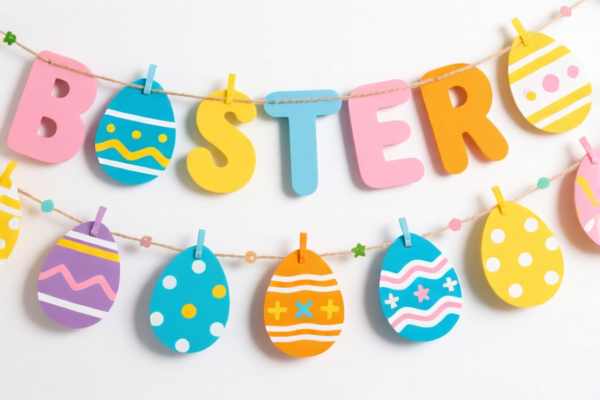| HS Code | Official Doc | Tariff Rate | Origin | Destination | Effective Date |
|---|---|---|---|---|---|
| 3926400090 | Doc | 35.3% | CN | US | 2025-05-12 |
| 3901909000 | Doc | 61.5% | CN | US | 2025-05-12 |
| 1806909011 | Doc | 43.5% | CN | US | 2025-05-12 |
| 6913905000 | Doc | 43.5% | CN | US | 2025-05-12 |
| 3213900000 | Doc | 58.4% | CN | US | 2025-05-12 |
| 4823901000 | Doc | 55.0% | CN | US | 2025-05-12 |




Okay, let's break down the HS codes and tax implications for your "EASTER EGGS DECORATIONS" declaration. Here's a structured analysis to help you understand the classification and potential costs.
Understanding HS Codes: A Quick Primer
HS codes (Harmonized System codes) are internationally standardized codes used to classify traded products. The first 6 digits are generally consistent worldwide, while additional digits can vary by country. Here's what the first two digits typically indicate:
- Chapter 39: Plastics and articles thereof.
- Chapter 69: Ceramic products.
- Chapter 18: Cocoa and chocolate.
- Chapter 32: Organic coloring matter.
- Chapter 48: Paper and paperboard.
Detailed Analysis of Your HS Codes
Let's go through each code provided:
-
3926.40.00.90 – Other articles of plastics and articles of other materials of headings 3901 to 3914: Statuettes and other ornamental articles Other
- Meaning: This code covers ornamental articles made of plastic or other materials (like ceramic, wood, etc.). It's a broad category for decorative items.
- Tax: 35.3% total tax (5.3% base tariff + 0% additional tariff currently, increasing to 30% additional tariff after April 2, 2025).
- Considerations: What is the primary material of these eggs? If they are predominantly plastic, this is a good fit. If they are ceramic, the 6913 code might be more appropriate.
-
3901.90.90.00 – Polymers of ethylene, in primary forms: Other: Other: Other
- Meaning: This code is for raw plastic materials (like polyethylene pellets). It's unlikely to apply directly to finished Easter eggs unless you are importing the plastic to make the eggs.
- Tax: 61.5% total tax (6.5% base tariff + 25% additional tariff currently, increasing to 30% additional tariff after April 2, 2025).
- Considerations: Are you importing raw plastic to manufacture the eggs? If so, this code applies.
-
1806.90.90.11 – Chocolate and other food preparations containing cocoa: Other: Other: Other Confectionery: Containing peanuts or peanut products
- Meaning: This code is specifically for chocolate confectionery containing peanuts or peanut products.
- Tax: 43.5% total tax (6.0% base tariff + 7.5% additional tariff currently, increasing to 30% additional tariff after April 2, 2025).
- Considerations: Are these chocolate eggs with peanuts? If so, this is the correct code.
-
6913.90.50.00 – Statuettes and other ornamental ceramic articles: Other: Other: Other
- Meaning: This code covers ornamental ceramic statuettes and articles.
- Tax: 43.5% total tax (6.0% base tariff + 7.5% additional tariff currently, increasing to 30% additional tariff after April 2, 2025).
- Considerations: Are the eggs made of ceramic? If so, this is a strong candidate.
-
3213.90.00.00 – Artists', students' or signboard painters' colors, modifying tints, amusement colors and the like, in tablets, tubes, jars, bottles, pans or in similar forms or packings: Other
- Meaning: This code is for paints, colors, and dyes. It's unlikely to apply to finished Easter eggs unless they are specifically covered in paint as the primary feature.
- Tax: 58.4% total tax (3.4% base tariff + 25% additional tariff currently, increasing to 30% additional tariff after April 2, 2025).
- Considerations: Are these eggs primarily paint or coloring materials?
-
4823.90.10.00 – Other paper, paperboard, cellulose wadding and webs of cellulose fibers, cut to size or shape; other articles of paper pulp, paper, paperboard, cellulose wadding or webs of cellulose fibers: Other: Of paper pulp
- Meaning: This code covers articles made of paper pulp.
- Tax: 55.0% total tax (0.0% base tariff + 25% additional tariff currently, increasing to 30% additional tariff after April 2, 2025).
- Considerations: Are these eggs made of paper pulp?
Recommendations & Next Steps
- Material is Key: The primary material of your Easter eggs is the most important factor in determining the correct HS code.
- Detailed Product Description: Provide a very detailed description of the eggs to your customs broker. Include the material composition, any coatings or finishes, and the intended use.
- Consider the April 2, 2025 Tariff Changes: Be aware of the upcoming tariff increases.
- Certifications: Depending on the material and intended use (e.g., if they are for children), you may need certifications like EN71 (toy safety) or food safety certificates.
- Consult a Customs Broker: I highly recommend working with a licensed customs broker in China. They can provide expert guidance and ensure accurate classification and compliance.
- Single Declaration: If you have multiple types of Easter eggs, consider declaring them separately with the appropriate HS code for each type.
Disclaimer: I am an AI assistant and cannot provide definitive customs advice. This information is for general guidance only. Always consult with a qualified customs broker for specific import regulations and requirements.
Customer Reviews
The table with tariff rates and effective dates is super helpful, but I found the 3213900000 code a bit confusing. More context on its use would be appreciated.
Great resource for understanding the difference between HS codes for plastic, ceramic, and paper Easter eggs. Definitely saved me time looking up the right classification.
The explanation of the 43.5% tariff on 1806909011 was useful, but I wish there were more details on how to determine the correct HS code based on material composition.
Very clear breakdown of HS Code 3926400090 for plastic Easter egg decorations. The tax details and material considerations were really helpful.